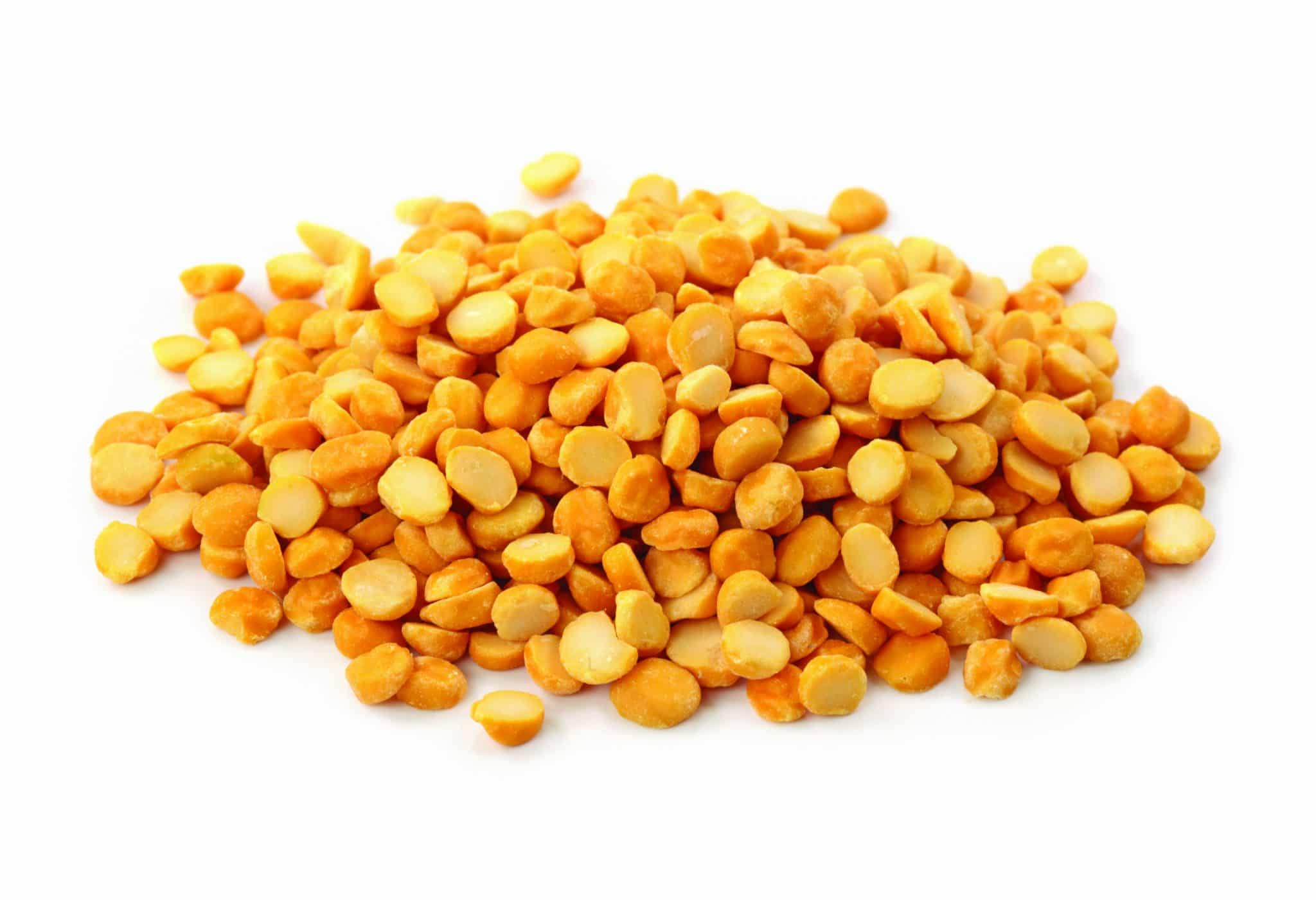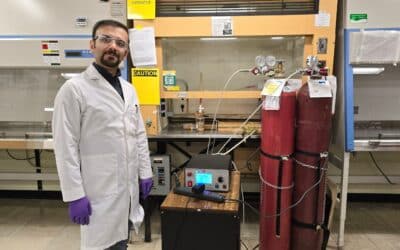The PPAA’s goal is to make plant protein a key economic driver of Alberta’s economy. To get there, the alliance must change the industry’s current mindset, thereby removing the biggest challenge to significant new investment.
Plant protein processing is one of the newer — and most exciting — agricultural value-added opportunities in Alberta. Open any Canadian newspaper these days and you’ll likely see a news story about plant proteins. A&W sold out of its Beyond Meat burger barely a month after it hit the menu in 2018, making the pea and beet-based burger the biggest ever launch for Canada’s second largest hamburger chain. Almost all other fast food (and many slower food) restaurants have since jumped on the protein alternative bandwagon, unveiling their own non-meat menu items in speedy succession.
Meat industry giants, including Tyson, Cargill and Maple Leaf, have each announced investments in alternative protein R&D, products and start-up companies. Meanwhile, new announcements of plant protein investments in pet foods, pharmaceuticals and beauty products hit the news daily. With market demand for plant proteins ballooning and global processing capacity still relatively low, countries around the world are scrambling to draw as much processing investment as they can capture.
The Plant Protein Alliance of Alberta (PPAA) wants Alberta farmers to benefit from the huge and growing opportunities in plant protein fractionation and processing. Since its inception one year ago, the PPAA has been working from every angle to encourage plant protein investment in Alberta.
“The world is clamouring for more plant protein,” says Allison Ammeter, chair of both the Plant Protein Alliance of Alberta (PPAA) and Pulse Canada. “The issue is not going to be whether the demand is met, but whether it will be met by processing plants in Canada.”
Despite the mainstreaming of plant protein processing, Canada currently exports nearly 95 per cent of the agricultural products it grows as raw commodities.
“I’m not asking for zero per cent: I still want to feed the world,” says Ammeter. “But I would dearly love for us to drop that to just 65 or 70 per cent. When we’re shipping away raw products, we’re shipping away jobs, we’re shipping away GDP, and we’re shipping away intellectual capacity — and then we’re buying it all back again at full cost. We can be so much more.”
The PPAA exists to help build Alberta into the “processing powerhouse” Ammeter believes the province can be. The PPAA’s mission is to facilitate the development of a diverse, profitable and sustainable plant protein and plant ingredient processing industry in Alberta: in short, to position Alberta as the single best place in the world for anyone looking to invest in plant protein processing.
In addition to clean, natural resources, excellent grower expertise, and globally-recognized food quality, Canada is uniquely positioned to capitalize on the growing demand for plant protein because it already grows a large volume of protein crops. Given the cost of shipping, it makes sense to process near where the primary products are produced.
Admittedly, China currently has a leg-up on Canada for processing. Because China has far less stringent safety, environmental and social regulations, investors can build processing plants much more quickly and easily there than here. That said, consumers care about where and how their food is produced, which means China isn’t at such an advantage.
“I don’t see China being a long-term solution,” says Ammeter. “A lot of companies are demanding good air, good water, good HACCP [food safety hazard avoidance protocol]. We at times question whether food processors are willing to pay enough for it yet, but customers definitely want it. Whereas a lot of us will put up with clothing, tools, kids’ toys manufactured who knows where, food is different.”
Dan Dibbelt, executive director of the Peace Regional Economic Development Alliance, agrees.
“The world is changing. People want local, they want to know who grew it, they want to know what area of the world it’s from,” says Dibbelt. “I used to love canned mushrooms, but will never buy those again. I don’t know what’s in the water [from mushrooms processed in China]. People are looking more and more at that. They want to know their food is clean, that it’s processed properly.”
He also believes consumers are moving toward flexitarian diets: additional good news for plant protein processing.
“Quite honestly, I love meat. My dad was a butcher and sausage maker. I’m never giving up meat. But, would I eat a veggie burger — 100 per cent. It’s about variety. I don’t know it will ever be that we get rid of meat, but I do believe diversification is here to stay. Even here in northern Alberta, where we put gravy in our baby bottles, people are curious, and they’re excited about plant proteins.”
PPAA’s goal is to make plant protein a key economic driver of Alberta’s economy. To get there, PPAA is striving toward supporting the development of high-functioning value chains, state-of-the-art infrastructure and commercialized, market-driven products. It sees itself fulfilling four key roles: leading and supporting strategic alliances, encouraging collaborative relationships, cheerleading new ideas, and building awareness.
“We spend a lot of our time with people who are just starting to change their mindset, showing them how important it is to make a shift,” says Ammeter. “And, we are also already working with some incredible entrepreneurs who are already in Alberta, connecting them to whomever they need for support, whether that’s venture capitalists or angel investors or distributors, et cetera. We see our role as being connectors, introducers, networkers to help in any way with the existing industry and also to motivate those who are thinking of investing.”
One of PPAA’s major mandates is to lobby various levels of government to improve the competitive environment for plant protein processing in Alberta. Certain regions, especially some eastern U.S. states, are several steps ahead of Canada in providing incentives that draw new processing investment.
“Canada is getting the picture that we have to bend over backwards to attract companies because it benefits all Canadians,” says Ammeter. “I’m not talking about wining and dining and crazy things: I’m talking maybe giving them a tax break for a couple of years, maybe making sure there’s no red tape. It’s a mindset: we need to have government and industry working in tandem to figure out what we can do to have [companies] relocate here.”
Already, Canada has drawn some big time investment. Among the more exciting builds, is the new Roquette plant slated to open in Portage la Prairie, Man., in the spring of 2020. With an annual processing capacity of 125,000 tonnes of yellow peas per year, the company describes the plant as the largest pea processing plant in the world. However, peas are certainly not the only plant protein with potential.
“Hemp seed protein has really taken off. There are so many products right now using hemp seed for everything from hand lotion to hemp milk,” says Ammeter. “There are a lot of opportunities for oats right now and, again, we’re growing the bulk of them. Canola — there is a lot of opportunity there to extract the protein left in the meal after the oil has been crushed out. Flax, triticale, barley, rye: the world is demanding more protein and, here we are, we have it.”
Possibly the very biggest challenge to bringing in significant new investment is industry mindset: the move from growing raw product to growing and then carrying that product right through processing requires a major paradigm shift.
The change isn’t impossible: in fact, Canada has proven its ability to shift toward a processing mentality with canola. In a small number of years, Canadian agriculture and agri-food successfully built a fully integrated canola processing sector that generates far better returns than canola would as a raw commodity. Now, the same needs to occur across commodity types.
“There is a real desire to change. Everyone is starting to recognize that we are at the complete mercy of global markets. Some of those markets do whatever they want without playing by the rules. We want to be part of the global economy, but we don’t want to be at the mercy of countries like China, India, Saudi Arabia, and Italy. They’re not in it for our best interests,” says Ammeter.
Another challenge, at least for some parts of Alberta, is transportation. While northern Alberta has always struggled with adequate access to rail and truck transportation for agricultural commodities, Dibbelt believes value-added opportunities have grown to the point that the north country’s growing advantages almost offset the transportation challenges.
“We’re not there yet, but within the next few years. It’s coming,” says Dibbelt.
Just one year into operation, PPAA doesn’t yet have an assured and consistent stream of funding. That said, Ammeter feels the organization is well supported by government.
“We do feel, as we’ve talked to everyone from the [provincial Agriculture and Forestry] Minister down, that they are all cheering us on because they recognize we can make a difference in the value-add space. In terms of verbal support, we’ve 100 per cent got it. In terms of financial support, ask me in a year or so.”
Additional funds come from certain industry sponsors, as well as membership fees. The membership fee is kept intentionally low to draw a wide and diverse cross section of companies that can benefit from networking together.
Seed growers should welcome the growing interest in plant proteins with open arms. To date, most breeding has focused on improved agronomics (standability, disease resistance, days to harvest, etc.) and more generalized crop attributes (e.g. high protein level and high oil content). Plant protein processors, however, may need uniquely specific product characteristics, which could translate to increased opportunities for seed growers to grow niche varieties.
“I think what will happen more and more is buyers will say, ‘This is great, but is it possible for me to get this in this specific protein level?’ or ‘What I really need is a fibre with these particular characteristics, or a starch that works in this particular way,’… I know I sound a little like the Jetsons, but I don’t think I’m that far off,” says Ammeter.
It’s a “total win,” she says, noting the entire value chain has something to gain from Canada — and Alberta — becoming a plant protein powerhouse.
In addition to demand increasing for more specialized varieties, the seed industry may also benefit from increased total demand.
“I may be wrong, but it seems to me that if you’re growing a very specific product for a company, you’re going to use certified seed rather than [farm-saved seed]. You’re not going to take a chance that what you’re selling a company is not absolutely [to specifications],” she says.
Likely, the move to speciality, company-specific varieties will translate to more closed loop systems. While contract growing specialized varieties for a single processor is different than growing for traditional commodity sale, successful closed loops, like Nexerra canola or Viterra’s bean contracting in southern Alberta, are already operating.
“It’s exciting to move toward less of a general commodity and more meeting of specific needs,” says Ammeter. “Go look at Denmark or the Netherlands. They are itty-bitty countries geographically, but everything they produce goes out with value-add. They are leading the world in agricultural exports, not in volume, but in dollars. We could be that country.”






